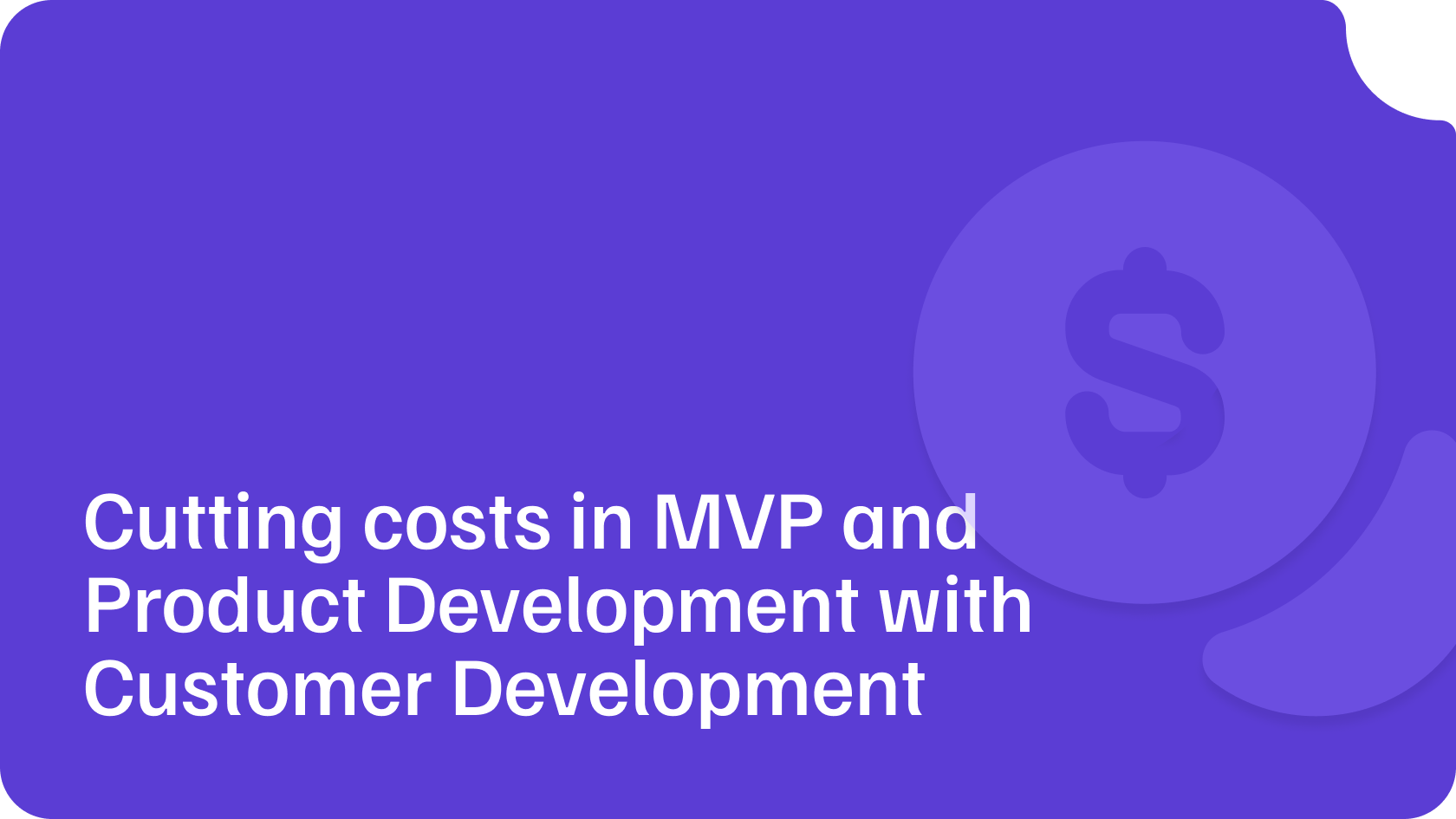Customer Development (CustDev) is an essential strategy for businesses aiming to create successful products while minimizing unnecessary costs. This approach focuses on understanding customer needs and market demand early in the product development process, ensuring that resources are invested wisely and efficiently. In this article, we'll explore how CustDev can significantly reduce costs associated with developing a Minimum Viable Product (MVP) and subsequent product development stages through five key aspects: early verification of market demand, tailoring features to customer needs, iterative development and continuous feedback, preventing costly redesigns, and establishing strategic partnerships.
1. Early verification of market demand

Problem: Traditionally, organizations would pour significant resources into building a product without proper market validation. This approach often resulted in expensive scrap-and-redo cycles or, even worse, developing a product that ultimately had no market demand.
Solution: CustDev addresses this issue by emphasizing the importance of verifying market demand before extensive development begins. By engaging with potential customers through interviews, surveys, and market research, companies can validate their product ideas early on. This process helps ensure that the product being developed has a real, viable market, significantly reducing the risk of costly pivots or abandonment later in the development cycle.
2. Tailoring features to customer needs

Problem: Developing an MVP or a full-fledged product with unnecessary features can majorly drain resources.
Solution: Through CustDev, businesses focus on understanding exactly what their customers need and value. This targeted insight allows companies to prioritize and develop only the features that are most important to their target audience, eliminating wasteful spending on unneeded functionality. By streamlining the feature set to align with customer needs, organizations can not only cut development costs but also speed up the time to market.
3. Iterative development and continuous feedback

Problem: Traditional product development often follows a linear path without incorporating customer feedback until late stages, leading to investments in features that don't meet actual user needs. This approach risks developing products that fail to resonate with the target audience, resulting in financial losses and delayed market entry.
Solution: CustDev encourages an iterative approach to product development, enabling businesses to gather and incorporate feedback from early adopters or potential customers continuously. This process involves releasing early versions of the product (MVPs) to a select group of users and using their feedback to make informed adjustments. This iterative cycle of development, testing, feedback, and refinement helps in identifying and resolving issues early, preventing the accumulation of costly mistakes. It also ensures that the final product is more closely aligned with customer expectations, increasing its chances of success.
4. Preventing costly redesigns

Problem: Without a thorough understanding of customer needs and preferences, organizations often face costly redesigns or even full overhauls of their products.
Solution: CustDev mitigates this risk by ensuring that customer feedback and preferences are integrated into the design process from the very beginning. By continuously validating assumptions about customer needs and adjusting the product accordingly, companies can avoid the need for major redesigns down the line. This not only saves on development costs but also reduces the time to achieve product-market fit.
5. Establishing strategic partnerships

Problem: Finding and establishing strategic partnerships can be challenging without a clear understanding of the market and customer needs.
Solution: By engaging in CustDev, companies can identify potential partners who share a common interest in the target market or who can complement the product offering. These partnerships can provide valuable resources, distribution channels, or expertise, further reducing the cost and complexity of developing and launching the product. Moreover, partnerships formed on the basis of shared customer insights are more likely to be successful, as they are built on a solid foundation of market understanding.
Summing up thoughts
In conclusion, Customer Development offers a structured approach to product development that significantly reduces unnecessary expenditure. By focusing on understanding customer needs, verifying market demand early, and adopting an iterative development process based on continuous feedback, companies can avoid costly mistakes, streamline their development efforts, and increase their chances of success.
Furthermore, by paving the way for strategic partnerships, CustDev can unlock additional resources and opportunities, further enhancing the product's value proposition and market potential.








